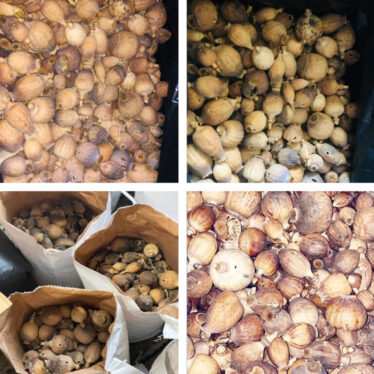- Your cart is empty
- Continue shopping
Austrian Poppy Flower: A Bloom of Heritage, Beauty, and Purpose
The Austrian poppy flower stands out for its vibrant beauty, deep cultural roots, and practical uses. Farmers in northern Austria, especially in the Waldviertel region, grow this unique flower for its seeds, blooms, and decorative pods. It plays an important role in agriculture, tradition, and cuisine.

Appearance and Growing Conditions
The Austrian poppy flower belongs to the species Papaver somniferum. Its large, delicate petals display soft shades of white, pink, purple, or red. Some varieties show off a dark center that enhances their visual appeal. These flowers bloom in late spring and early summer, transforming fields into colorful landscapes.
The plant grows best in cool, temperate climates. Austrian farmers cultivate it in well-drained soil under full sun. Many follow sustainable farming methods and avoid synthetic pesticides to maintain healthy crops and soil.
A Rich Cultural Heritage
People in Austria have cultivated the Austrian poppy flower for centuries. In Waldviertel, poppy growing has become a cherished family tradition. Every year, locals host festivals that celebrate the flower through regional food, crafts, and performances.
This flower goes beyond beauty—it symbolizes regional identity and pride. Many towns display poppy-themed murals, signs, and decorations that reflect its strong cultural value.
Culinary Uses of the Seeds
While the flower attracts attention with its color, the seeds offer the greatest value. Austrian families use the seeds of the Austrian poppy flower in traditional recipes like Mohnstrudel (poppy seed strudel) and Mohntorte (poppy seed cake). They also cook them in sweet dumplings and pastries.
These tiny seeds provide a nutty flavor and high nutritional value. They contain calcium, magnesium, and healthy fats. Bakers often grind the seeds and mix them with sugar, butter, or milk to create rich fillings for desserts.
Decorative and Artistic Uses
After harvest, many people collect the dried seed pods of the Austrian poppy flower for crafts and decorations. These pods keep their natural form and color, making them perfect for dried floral arrangements.
Crafters and florists use them in wreaths, bouquets, and rustic centerpieces. Home décor enthusiasts also include them in handmade projects thanks to their natural, earthy charm.
Legal and Ethical Notes
Although Austria legally supports poppy cultivation, other countries enforce stricter laws. The Austrian poppy flower comes from a species that naturally contains small amounts of opiate alkaloids. However, Austrian farmers grow their poppies specifically for food, using low-alkaloid varieties.
If you plan to buy dried poppy pods or seeds outside Austria, always check your local laws before importing them.
A Flower That Connects Past and Present
The Austrian poppy flower continues to connect generations through farming, food, and art. It brings beauty to the land, flavor to traditional recipes, and meaning to cultural celebrations. Whether blooming in fields or filling a pastry, this flower remains a powerful symbol of Austria’s living heritage.
